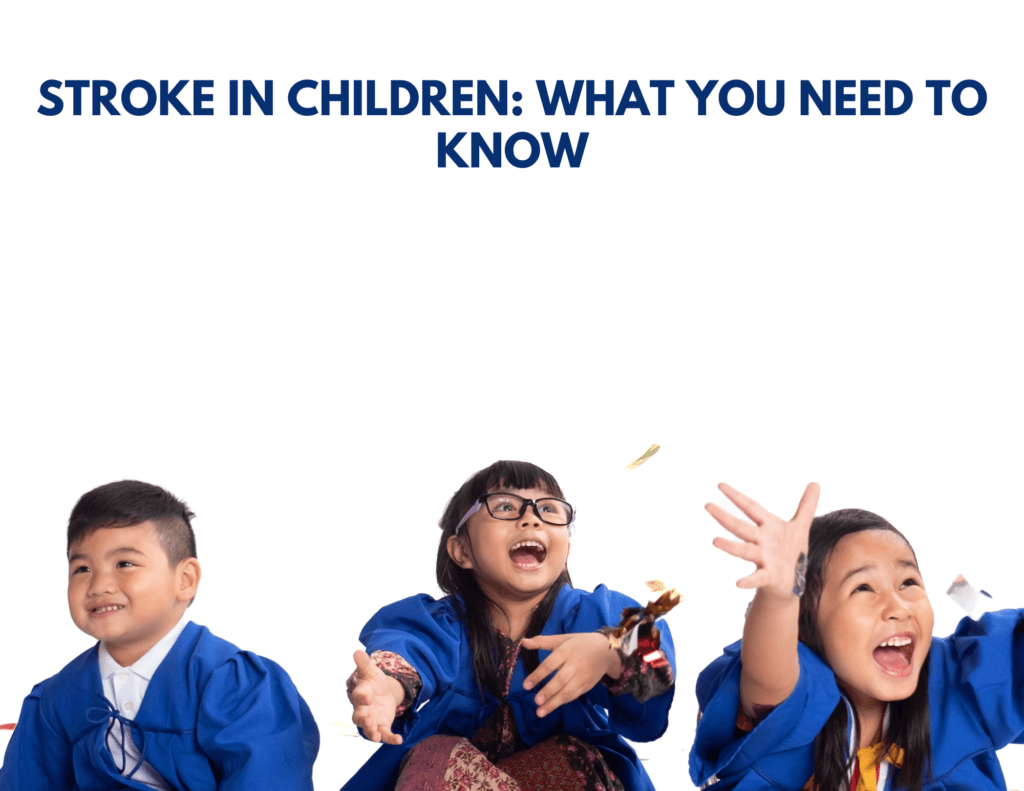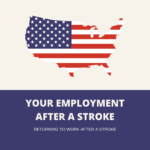Understanding Stroke in Kids: A Parent’s Guide

When most people imagine serious medical emergencies, their minds often go to older adults—especially those managing high blood pressure, diabetes, or long-term smoking habits. Yet reality shows that life-altering events do not only affect seniors. Young individuals can experience them too, and when that occurs, consequences can last for many years. For parents, relatives, or anyone standing beside a loved one during such times, gaining clear insight into what is happening inside is crucial. Confronting this reality is never easy, but accurate knowledge can influence outcomes positively—enabling faster action, more effective treatment, and a sense of calm amid uncertainty.
I’d like to walk you through what occurs when normal blood flow to a child’s head is disrupted—how events unfold, key warning signals to notice, and potential approaches to restore stability. We’ll also examine emotional strain and common challenges families often face along this journey. My aim is to provide clear, genuine insight in a way that feels relatable and easy to understand, so you can remain informed and ready to act quickly whenever urgent situations arise.
Such a crisis can occur at any stage of early development—ranging from infancy to teenage years. While causes often differ from those observed in adults, consequences frequently remain profound, with long-lasting effects that can alter daily functioning and overall well-being.
How Often Does This Condition Occur in Young Individuals?
Events like this are uncommon, yet they occur more often than many realize. Data from American Heart Association shows roughly 1 in 4,000 newborns experience such an incident, affecting about 5 in 100,000 children each year. While percentages seem small, these numbers still represent thousands of cases across United States annually.
A major concern is that medical events in young individuals often go unnoticed or are identified too late. These situations rarely come to mind immediately for doctors when symptoms such as sudden weakness, seizure episodes, or difficulty speaking appear. As a result, delays in intervention can happen, raising risk of serious, lasting complications.
Causes of Stroke in Children
Causes in young children often differ significantly from those seen in adults. In older individuals, hardened vessels or irregular heart rhythms frequently play a role, but in little ones, it is often linked to congenital heart conditions, specific infections, or physical injuries. Some common triggers include:
Irregularities Present at Birth: Some individuals arrive with uncommon structural traits inside circulatory pathways, especially around cardiac regions. Such variations can disrupt how blood moves across a system. When circulation lacks steady pressure or smooth rhythm, dense particles may form and drift into sensitive zones. This movement can upset normal function and, if vessels grow blocked, may trigger serious complications.
Sickle Cell Complications:
In individuals with this inherited disorder, red cells lose their usual round form and become rigid and crescent-shaped. Abnormally shaped cells struggle to move smoothly through veins and arteries. Instead, they tend to clump together and adhere to vessel walls. This accumulation of misshapen cells can obstruct circulation through narrow channels, causing delays or complete stoppages in movement. When this occurs, essential organs and tissues may not receive a consistent supply of oxygen and nutrients, potentially resulting in serious complications if immediate attention is not given.
Viral and Bacterial Inflammation: Infections like meningitis or encephalitis can trigger swelling inside a skull. Such swelling can interfere with vital functions in crucial areas of a child’s head, potentially leading to long-term complications if not addressed quickly.
Trauma to the Head or Neck Area:
Any direct impact, sudden jolt, or accident affecting head or upper spine can severely disrupt normal blood flow. Delicate vessels supplying critical areas around brain may become torn, bruised, or compressed during such events. When these pathways sustain damage, abnormal changes can occur—such as internal bleeding or fluid pooling in areas where it shouldn’t collect. Such disruptions may not be immediately obvious but can escalate rapidly, particularly if pressure builds inside skull or oxygen delivery is reduced. Prompt action is essential to prevent further complications and aid recovery.
Clotting Problems: Some individuals inherit traits that cause unusual thickening of circulating fluids. When clots develop unexpectedly, risk rises for blockages within major arteries or veins, which can disrupt normal circulation and result in serious complications.
Tears in Artery Walls:
When an inner layer of a major vessel tears—often from intense strain, sudden impact, or abrupt movement—a small flap or gap can form along its wall. This exposed section can change how fluids move through that channel. Instead of flowing evenly, liquids may swirl, stagnate, or collect in that area, creating turbulence. Over time, such disruption can compromise circulation, place stress on surrounding tissues, and potentially trigger a chain reaction affecting other systems. Prompt action is crucial to prevent further complications and restore proper function across connected pathways.
Inherited Vessel Traits
Certain rare traits passed down through family lines — including ones linked with Moyamoya disease — can alter how oxygen moves through vessels. In such cases, arteries carrying oxygen-rich fluid may grow unusually narrow or form tangled, twisting routes. Once normal flow is disrupted in this manner, strain rises inside a circulatory system, raising risk for serious complications in crucial regions.
Severe Fluid Loss or Major Illness: In extreme situations such as intense dehydration or a sudden serious illness, circulation can become unstable. This disruption can trigger dangerous reactions, potentially leading to urgent medical emergencies that require immediate attention.
Sometimes, even after extensive testing and careful observation, professionals cannot identify a specific cause. Not knowing why an event occurred can become one of most difficult challenges for families seeking reassurance and clarity.
Warning Signs and Symptoms to Watch For in Young Ones
Recognizing when something is off in a developing child can be difficult—particularly if that child cannot clearly express what is happening. Paying close attention to physical signals and subtle shifts can play a crucial role in spotting serious problems early on. Warning signs frequently mirror those seen in adults and might include:
Unexpected Loss of Strength or Tingling Sensation:
Sometimes, a person can experience a sudden loss of strength or an unusual numb sensation, often affecting only one side. This can appear in facial muscles, an arm, or a leg, making simple motions awkward or challenging. Such episodes may strike without notice, leaving that side unresponsive or slower to react compared to usual functioning.
Difficulty Speaking Clearly or Understanding Speech: You may observe someone dragging words, creating jumbled sentences, or responding in ways that don’t match ongoing conversation. It might appear as though finding correct words is a challenge or keeping up with what others are saying is hard. This change in communication can occur suddenly and feel strikingly out of place compared to usual speech patterns.
Sudden and Severe Headache:
An abrupt, pounding head pain that erupts out of nowhere — especially when paired with nausea or vomiting — can signal a serious internal issue. This is not a slow-building ache or one that eases with rest. It can strike like a lightning bolt and may feel unlike any head pain experienced in past years. In some instances, added signs such as light sensitivity, confusion, or trouble staying alert may appear as well. When an event like this unfolds, quick action is crucial, since it may point toward a deeper concern requiring urgent focus.
Vision Problems
Sudden changes in how clearly someone sees may occur, including blurry or double images. In some cases, sight may fade partially or completely in one eye—or even both—without warning. These shifts often happen quickly and can feel disorienting or frightening, especially during everyday activities like reading, walking, or playing. It’s important to take changes in eyesight seriously, as they can signal that something more significant is occurring internally and needs attention.
Feeling Unsteady or Off-Balance: When a person begins to feel unusually wobbly or lightheaded, maintaining safe movement can become challenging. Sudden loss of coordination may make walking in a straight line, climbing stairs, or standing upright difficult. In certain moments, stumbling, swaying, or falling can occur without warning. Shifts in physical stability can develop quickly and must not be ignored, particularly if they happen unexpectedly or occur alongside other unusual behaviors.
Seizures: In certain cases, sudden bursts of abnormal electrical activity may occur within brain tissue, causing involuntary movements, temporary loss of awareness, or staring spells. This type of response often appears during early stages of development, including infancy. Episodes can last a few seconds or extend for longer periods, with intensity varying from mild to severe. Sometimes, these events go unnoticed or are mistaken for other conditions.
In babies and toddlers, symptoms may be more subtle and can include:
Excessive sleepiness or irritability
Difficulty feeding
Relying more on one side of a person
Developmental delays or regression
If you notice any of these symptoms, getting medical help right away is vital. Acting fast can make a significant difference in treatment and recovery.

Identifying the Condition in Young Ones
Pinpointing issues in someone at an early stage of life can be challenging, especially since warning signs often resemble migraines, seizures, or common illnesses. Still, professionals have a variety of tools to determine what’s happening:
Imaging Tests: MRI (magnetic resonance imaging) is considered the most reliable method for identifying what’s going on. It captures detailed visuals of internal structures and highlights areas that may be affected. CT (computed tomography) scans are another option, often used in urgent situations.
Lab tests: Laboratory analysis can reveal hidden problems that may not be immediately apparent. Such tests inspect composition of fluids within a person, allowing medical professionals to identify indications of infection or irregular patterns in internal functions. For instance, results might indicate elevated or reduced levels of certain components, or detect unusual substances present in circulation—offering crucial insight into underlying conditions and potential disruptions without obvious outward signs.
An echocardiogram is a type of ultrasound that produces detailed images showing how a heart is structured and how it functions. This test can reveal unusual features or structural variations within a heart that might contribute to an issue. By carefully observing movement and function of heart chambers and valves, medical professionals can identify signs of irregular activity or patterns that may place extra strain on other areas of a body. Insights gained from this process provide crucial information for understanding internal workings when outward signs indicate something may be amiss.
Angiography: This procedure offers a close examination of internal vessels responsible for delivering oxygen and nutrients throughout the upper torso. By introducing a specialized dye into these conduits, medical professionals can observe movement, identify points of narrowing, blockages, or unusual pathways. Results provide a clear picture of vessel performance and allow determination of structural irregularities or obstructions that could disrupt normal circulation and organ operation.
Once clear identification happens, next step involves finding its cause so an appropriate plan for management can be put in place.
Managing Healing Options for Young Patients
Approaches for managing this condition differ depending on whether a blockage or bleeding is present and what initially triggered it. Below is a concise overview of available methods:
Ischemic Treatment:
Thrombolysis involves using specially formulated medicine to break apart blockages that disrupt fluid movement through critical internal pathways. This method is often chosen when rapid restoration of flow through narrow or obstructed passages becomes necessary. In adults, application of this approach occurs more frequently, particularly during emergencies where timing plays a crucial role. For younger individuals, usage is far less common because developing systems respond differently, increasing chances of unintended side effects—especially internal leakage from fragile or weakened vessel walls. Careful evaluation of benefit versus risk by trained professionals is essential, as medication can occasionally create complications that prove difficult to manage in smaller, growing bodies. For these reasons, alternative methods are generally preferred for younger age groups unless circumstances clearly demand swift intervention through this specific technique.
Anticoagulants: Medications of this class work to stop clots from forming within internal channels. By lowering tendencies of liquid components to stick together or cling to vessel walls, these drugs maintain steady, uninterrupted movement through vital systems. This gentle thinning process reduces chances of obstructions appearing in pathways where consistent circulation is essential for proper function. Such a strategy proves especially important for individuals with inherited conditions or a history of previous episodes, as it lessens vulnerability to similar disruptions in future.
Surgery: In certain situations, medical professionals may need to carry out a procedure to remove an obstruction within internal channels or repair a damaged vessel that interrupts movement of essential fluids. This direct intervention restores normal circulation and lowers the risk of additional complications in regions that require consistent operation.
Hemorrhagic Treatment:
Keeping Circulatory Pressure in Check:
Keeping internal pressure steady within vessel networks plays a critical role in preventing additional leakage. When channels experience stress or sustain damage, even minor rises in pressure can escalate problems. Careful monitoring and regulation of this force can limit fluid from escaping into vulnerable areas, reduce potential complications, and give bodily systems a greater chance to restore balance.
Surgery: When internal fluid escapes in significant amounts, a surgical procedure may become necessary. This could involve carefully removing excess buildup to ease stress on surrounding areas or repairing a torn passage within a circulatory network. Goal focuses on restoring smoother function while lowering risk of additional complications in vulnerable regions.
Rehabilitation:
Occupational work and communication-focused training often play vital roles in guiding young individuals toward regaining everyday abilities. Programs aim to rebuild coordination, strengthen interaction skills, and expand independence. From learning to dress, manage utensils, or express ideas with clarity, steady guidance allows a child to adapt and gain ground after a demanding setback. Main goals include raising confidence and creating smoother routines across daily activities.
Healing and Long-Term Outcomes
Recovery usually spans long periods and can bring many hurdles, especially for children and adolescents. Young brains show striking adaptability, often allowing far greater gains compared with adult brains. Progress hinges on factors such as severity of an incident, specific regions of a head affected, and how quickly early action begins.
Some children regain full function as months pass, while a portion may carry lasting hurdles. Possible outcomes include weak muscle groups or limited motion on one side, difficulty forming words or grasping spoken language, lapses in memory or focus, along with clear shifts in mood or conduct. Progress varies based on how fast action began and which brain regions sustained injury.
Weakness or paralysis affecting one side of a person
Difficulty with speech or language
Cognitive challenges, such as problems with memory or attention
Behavioral or emotional changes
Positive reinforcement from family members, teachers, and mentors plays a crucial role in guiding young individuals toward reaching full potential after experiencing such a challenging event. Consistent guidance, patience, and understanding from those around them can foster confidence, resilience, and motivation, allowing growth in skills, independence, and overall development despite obstacles.
Emotional Effects on Families
An unexpected crisis early in life doesn’t just shake someone experiencing it—it sends ripples throughout a household. Parents or guardians may struggle with confusion, worry, or even self-blame. Siblings might find it difficult to grasp what’s happening and could feel left out or uncertain about how to respond. Seeking guidance through counseling, sharing experiences with others facing similar challenges, or leaning on trusted friends and family can provide clarity, reassurance, and resilience when it matters most.
Preventing Stroke in Children
Although not every incident can be prevented, guardians can take specific actions to reduce chances of occurrence. By staying vigilant, following recommended routines, and addressing known risk factors, it is possible to minimize potential complications.
Keeping Things in Check When Ongoing Issues Are Present:
For someone managing a condition such as sickle cell disease, maintaining consistent monitoring can make a significant difference. This involves attending routine checkups with a reliable medical professional, adhering carefully to prescribed treatments or medications, and incorporating gradual but consistent adjustments in daily routines. Each action contributes to reducing likelihood of severe episodes in future. Key lies in proactive attention and taking preventive steps rather than reacting after complications arise.
Preventing Infections: Avoiding infections plays a key role in safeguarding brain function from serious long-term complications. Certain illnesses—especially ones that trigger inflammation, such as meningitis or encephalitis—can disrupt normal brain activity and lead to lasting challenges. Maintaining up-to-date vaccinations provides a strong line of defense. Immunizations created to defend against specific viruses or bacteria act like a protective barrier, lowering the risk of harmful agents causing damage to essential structures. Taking this proactive approach ensures ongoing protection and greater peace of mind.
Daily Routines That Promote a Stronger Future
Choosing wholesome meals, staying physically active, and maintaining weight within a steady range can have a powerful impact on internal systems. These habits encourage stable circulation, consistent energy levels, and smoother overall function. They also help keep issues such as elevated blood pressure or high blood sugar under control—both of which can increase risk for serious events later on.
Is it possible for someone that age to go through this without any clear warning?
Yes, it is possible for someone to experience this condition without obvious or noticeable symptoms. This is often referred to as a “silent stroke.” It is more common in individuals with certain medical conditions, such as sickle cell disease or congenital heart defects. These incidents are typically detected incidentally during imaging tests, like an MRI, performed for other reasons.
Such episodes can leave lasting effects, often appearing in ways not immediately obvious. Over time, an individual might experience difficulties with memory, concentration, or learning—challenges that could easily be mistaken for unrelated issues. Staying vigilant through regular examinations and evaluations is essential for noticing subtle changes early and taking appropriate action to address them.
Can this impact someone’s growth or learning abilities over time?
Yes, events like this can leave lasting effects on a person’s development, depending on severity and which area of head was involved. At that stage, mind is highly adaptable—a trait called neuroplasticity—which offers strong chance to regain some abilities over time. Still, certain challenges may persist, such as:
Physical Effects: Some young people may notice that one side of their body no longer responds as it once did. This can appear as decreased strength or stiffness in an arm or leg, making routine activities more challenging. Tasks such as tying shoelaces, holding a pencil, or fastening buttons may require extra effort or feel awkward. Balance may also be impacted, causing unsteadiness while standing or moving around. Such changes often become most noticeable during activities demanding precision, coordination, or simultaneous use of both hands.
Cognitive Effects: Difficulties may arise in areas like remembering details, staying focused for extended periods, handling tasks that require logical thinking, or organizing thoughts clearly. These struggles can make it harder to keep up with schoolwork, follow instructions, or complete assignments that involve multiple steps. Over time, these issues might affect how well someone performs in a classroom setting or adapts to new learning environments.
Speech and Language Issues: Some individuals may struggle to put thoughts into words, follow conversations, or make sense of what others are saying. They might pause frequently, search for right words, or use terms that don’t quite fit. In other cases, responses may seem off-topic or confusing, even when intentions are clear. This can lead to frustration, especially during interactions at school, home, or social settings. Over time, practicing these skills with consistent guidance can make expressing ideas feel more natural again.
Emotional and Behavioral Changes: Some children may go through noticeable shifts in how they respond to situations or interact with others after going through a major experience like this. They might become more withdrawn, anxious in unfamiliar settings, or show signs of sadness that weren’t there before. Everyday frustrations—like not being able to keep up in class or struggling with basic tasks—can lead to irritability or frequent outbursts.
Others might become more reactive, acting on impulse without thinking things through or having difficulty staying calm in situations that used to be easy to handle. This might look like sudden anger, refusal to follow routines, or trouble adjusting to changes in their environment. These shifts don’t always show up right away but can gradually become more noticeable over time.
Guidance from familiar faces, consistent encouragement, and establishing a predictable daily routine can guide children through difficult challenges. Collaborating with educators and counselors provides young ones with practical tools to navigate their environment with greater confidence, develop new strategies for managing frustration, and strengthen focus.
Prompt action with therapies such as physical, occupational, and speech sessions can greatly enhance recovery and skill development. Structured learning programs and guidance from trained professionals allow young individuals to adjust and succeed despite obstacles. Creating a consistent, nurturing home environment fosters confidence, strengthens resilience, and encourages steady progress over time.
Conclusion
Understanding this issue can be challenging, as it involves multiple factors and often remains partially unknown. While occurrences are relatively rare, recognizing signs early can significantly influence how quickly appropriate measures are taken. With prompt action and consistent direction, many individuals experiencing this condition can continue to live meaningful and engaged lives. Promoting awareness and advocating for additional research and resources plays a crucial role in enhancing outcomes for affected individuals and family members.
If one key takeaway stands out from all of this, it’s to trust instincts. When something feels unusual—whether a sudden shift in movement, difficulty finding words, or unexpected behavior—don’t ignore it. Quick action can lead to faster answers and a higher likelihood of moving forward with confidence. Even a few urgent moments can change a path ahead dramatically.



